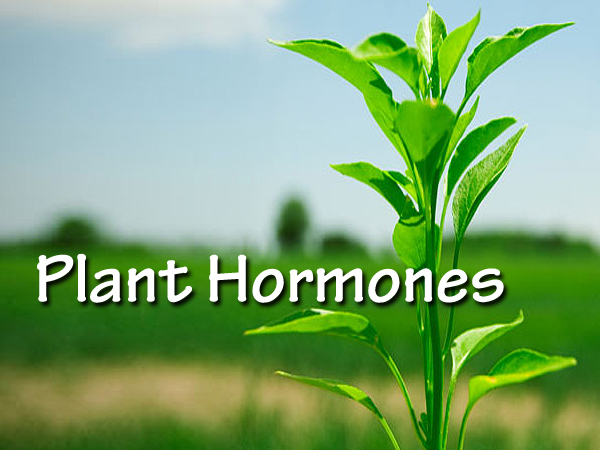Phytohormones, or plant hormones, are signaling molecules that control a range of physiological activities in plants, including growth, development, and reactivity to environmental cues. Plant hormones may be categorized into five main groups: auxins, gibberellins, cytokinins, abscisic acid, and ethylene. The physiology of each of these hormones, their manufacture, transport, and the molecular processes behind their manner of action will all be covered in this article.
Auxins
A family of plant hormones known as auxins encourages cell growth and differentiation. They are essential in the control of apical dominance because they prevent the development of lateral buds while maintaining the growth of the apical bud. Indole-3-acetic acid (IAA), the most well-known auxin, is produced in the apical meristem and transferred to the roots and lateral buds, where it stimulates their development. IAA flows from the apical meristem to the roots and lateral buds predominantly through polar transport, which is directed and happens in nature.
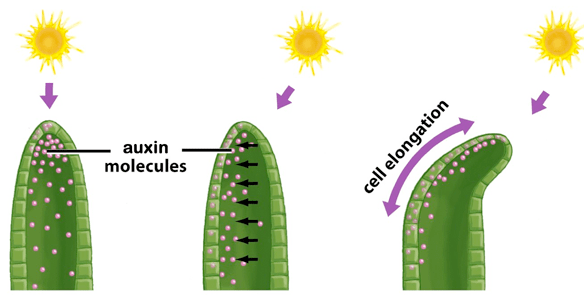
Gibberellins
Gibberellins are hormones found in plants that encourage seed germination and stem elongation. They are produced in the developing seeds and apical meristem before being transferred to the remainder of the plant. Gibberellins are essential for controlling the development of stems, leaves, and flowers; their presence or absence can cause plants to grow tall or short. By boosting cell division, breaking dormancy, and accelerating the breakdown of food stores, gibberellins also control seed germination.
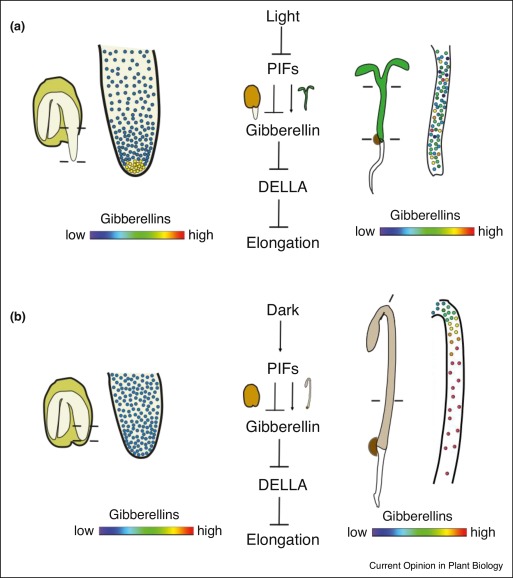
Cytokinins
Plant hormones called cytokinins encourage cell division and differentiation. The growing seeds, shoots, and roots synthesize them, then transfer them to the rest of the plant. Cytokinins are essential for controlling the development of fruits and flowers as well as shoot and root growth. By encouraging cell division in the roots and differentiation in the shoots, they also control the balance between root and shoot growth.

Abscisic acid (ABA)
A plant hormone called abscisic acid (ABA) encourages leaf abscission, seed dormancy, and stress reactions. It is produced in a number of plant tissues before being transferred to the remainder of the plant, where it controls a number of physiological processes. In controlling seed dormancy, where it prevents early germination, ABA plays a crucial function. Additionally, it controls how plants react to stress by encouraging stomatal closure, which lowers water loss, and it encourages leaf abscission by increasing the synthesis of an enzyme that weakens the bond between the leaf and stem.
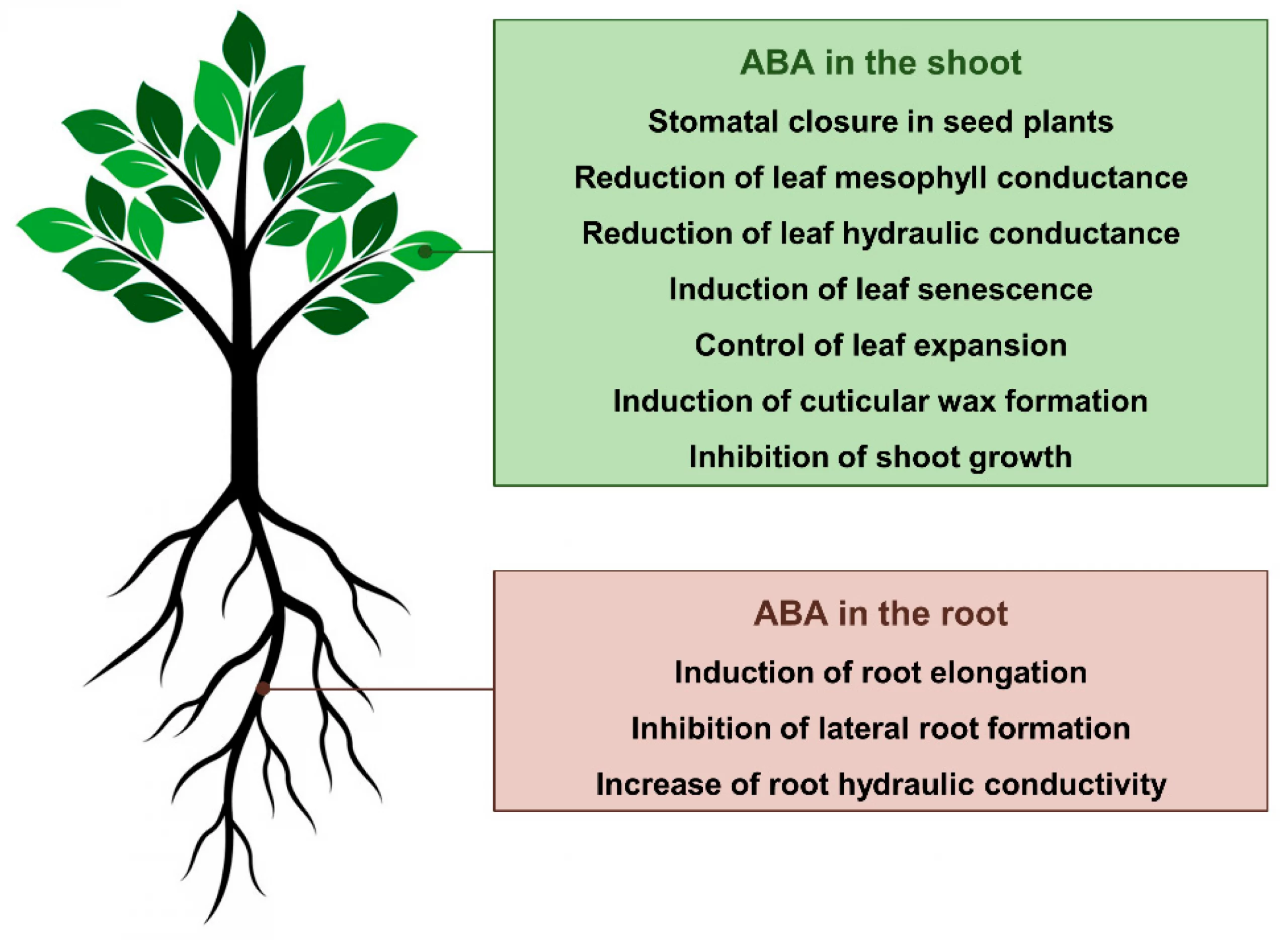
Ethylene
A gaseous hormone called ethylene encourages leaf abscission and fruit ripening. It is produced in a number of plant tissues before being transferred to the remainder of the plant, where it controls a number of physiological processes. By encouraging the breakdown of cell walls and the creation of fragrance compounds, ethylene accelerates fruit ripening. It also accelerates leaf abscission by encouraging the development of the enzyme that weakens the bond between the leaf and stem.

In summary, plant hormones are essential for controlling a variety of physiological processes in plants. They are produced in various plant tissues and then transferred to other parts of the plant, where they control activities including growth, development, and reaction to outside stimuli. We can create more potent plans for plant development and agricultural production if we comprehend the physiology of plant hormones.
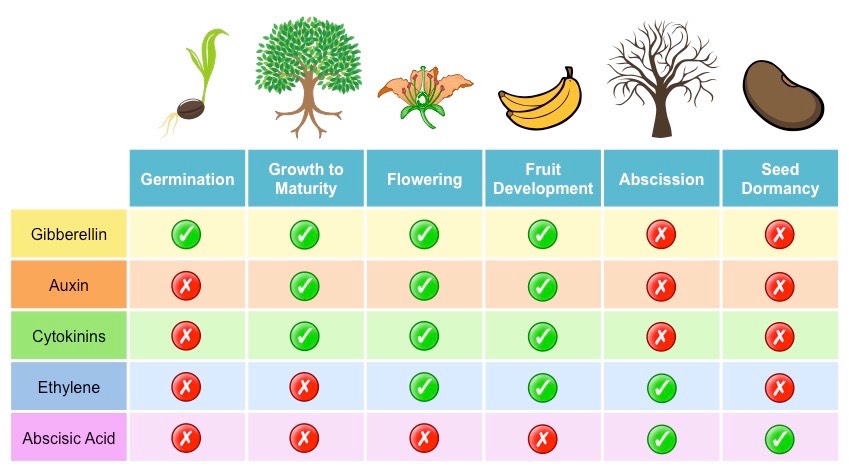
Importance of “Plant Hormones in Modern Agriculture”
Plant hormones are essential to contemporary agriculture, giving plant breeders and producers a useful tool to boost crop yields, promote plant development, and improve crop quality. Increased agricultural yield, enhanced resilience to environmental stresses, and the creation of novel plant types with desired features can all be achieved by adjusting the quantities and ratios of plant hormones.
Crop yields can be increased, which is one of plant hormones’ main advantages in contemporary agriculture. Increased crop yields can be achieved by producers by promoting quicker and more effective plant development by adjusting the amounts of certain hormones. For instance, gibberellins can be used to encourage stem elongation, resulting in taller, stronger plants that can carry heavier fruit burdens. Applying cytokinins can also encourage cell division and differentiation, which will boost the size and quality of the fruit. Another important benefit of plant hormones in modern agriculture is the improvement of plant stress tolerance. Hormones such as abscisic acid play a critical role in regulating plant responses to environmental stressors, such as drought, high temperatures, and salinity. By manipulating the levels of these hormones, growers can improve the ability of their crops to tolerate environmental stressors, leading to increased crop yields and improved crop quality.
Plant hormones are essential for the creation of novel plant types with desired features in addition to their roles in boosting crop yields and enhancing stress tolerance. For instance, altering auxin levels can lead to the creation of new plant kinds with enhanced branching patterns and bigger fruits. Similar to this, gibberellin modification can lead to the creation of novel plant kinds with stronger stems and increased resistance to lodging.
Plant hormones are essential in modern agriculture because they give plant breeders and producers useful tools to boost crop yields, promote plant development, and improve crop quality. A sustainable and ecologically acceptable method of boosting crop production and raising the general standard of agricultural output is the modification of hormone levels and ratios. We will be better able to create fresh and cutting-edge approaches for crop production in the future if we continue to study and comprehend the physiology of plant hormones.

References :
- Just a moment. . . (n.d.-b). https://www.sciencedirect.com/topics/neuroscience/plant-hormone
- VanDerZanden, A. M. (2023, January 30). How hormones and growth regulators affect your plants. OSU Extension Service. https://extension.oregonstate.edu/gardening/techniques/how-hormones-growth-regulators-affect-your-plants
- M. (2010, June 25). Plant Hormones and their Functions. Biology Wise. https://biologywise.com/plant-hormones-their-functions
- Davies, P. J. (2010). The Plant Hormones: Their Nature, Occurrence, and Functions. SpringerLink. https://link.springer.com/chapter/10.1007/978-1-4020-2686-7_1?error=cookies_not_supported&code=1a1fa5cc-a5a0-4af1-aef3-c08d4fc89945
Image Courtesy :
Featured Image : https://bit.ly/3lqmr4N
Content Image 1 : https://bit.ly/3luEo2a
Content Image 2 : https://bit.ly/3RVOsNV
Content Image 3 : https://bit.ly/3RSt3VG
Content Image 4 : https://bit.ly/40TlFOb
Content Image 5 : https://bit.ly/3xeEca2
Content Image 6 : https://bit.ly/3HTG9NW
Content Image 7 : https://bit.ly/3xleP6t

